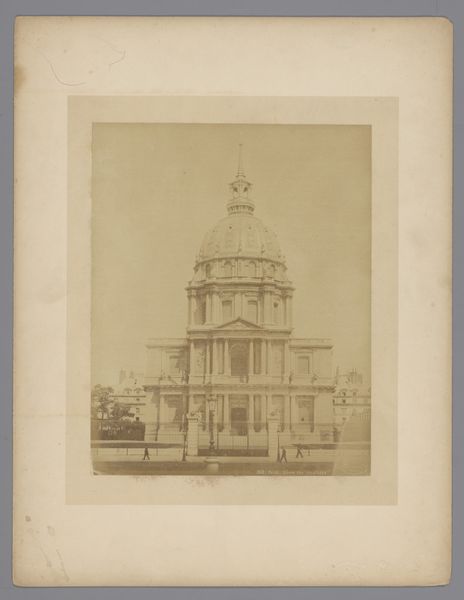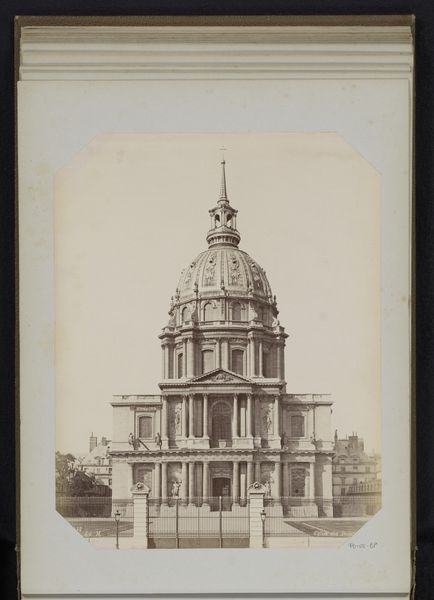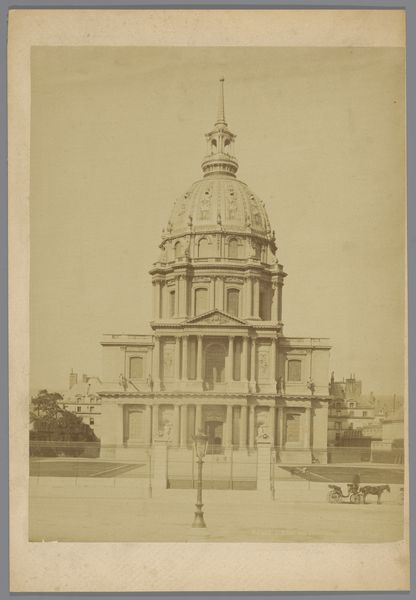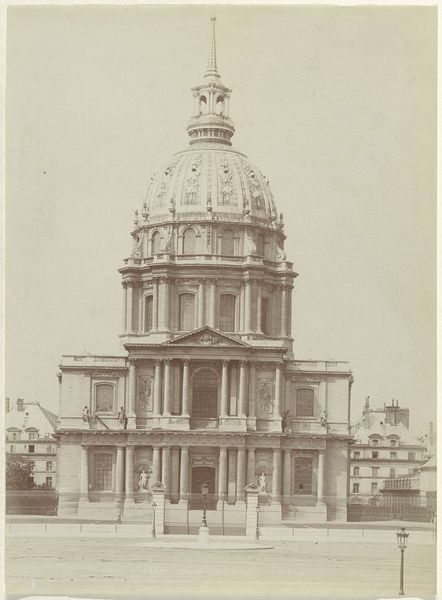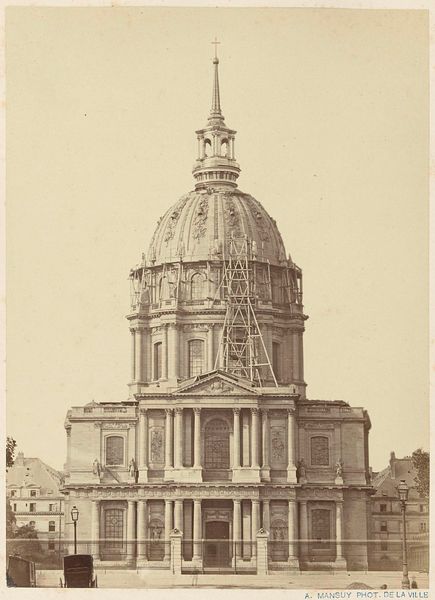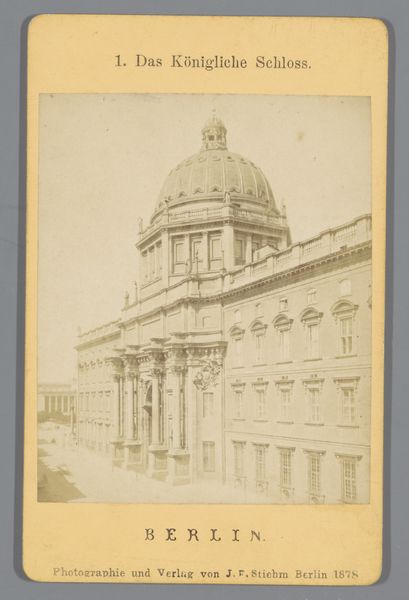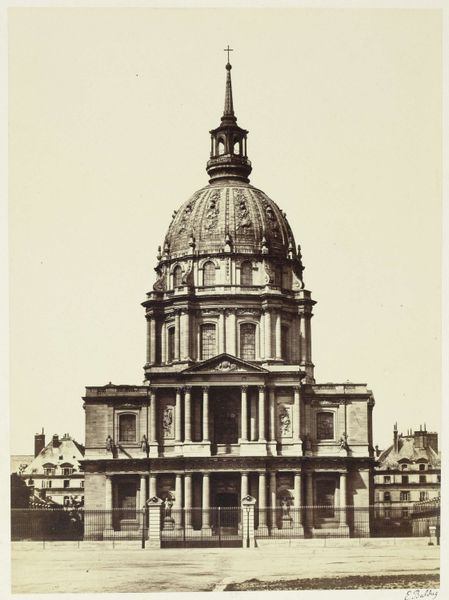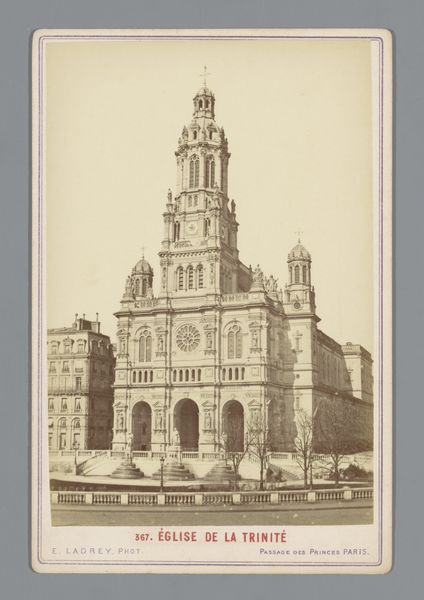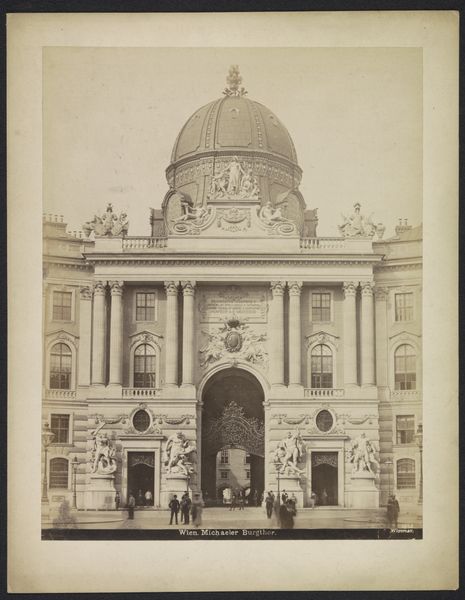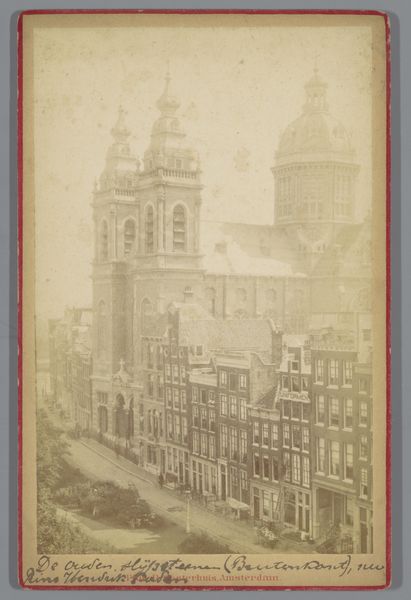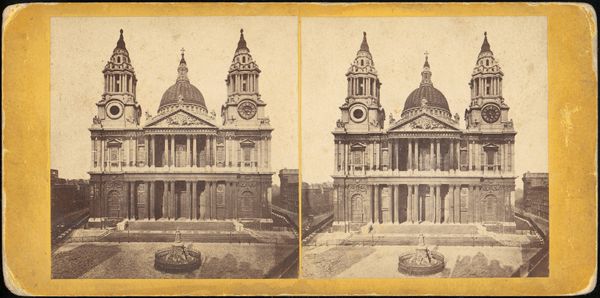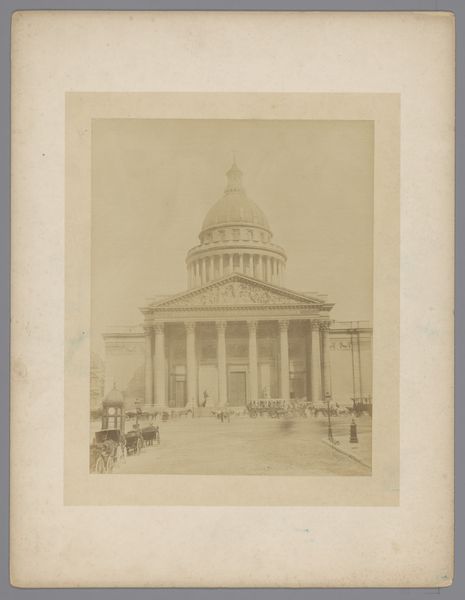
Dimensions: height 164 mm, width 107 mm
Copyright: Rijks Museum: Open Domain
Curator: What an image. This is a gelatin-silver print by Étienne Neurdein, titled "Kapel van het Hôtel des Invalides," placing its creation sometime between 1870 and 1900. The striking architectural photograph features the chapel. Editor: Immediately, I'm struck by its somber grandeur. The symmetry is almost overwhelming, lending it an air of profound gravity. The dome, of course, dominates, a clear visual assertion of power. Curator: Let's consider the means of production. The gelatin-silver process itself allowed for mass reproduction, which democratized access to images of iconic structures like this. It’s not just about the chapel; it's about how images of it were distributed. Think about the labor involved. Editor: I see a visual echo of Roman imperial architecture. The dome, those classical columns – they evoke a lineage of power, tradition, and authority. And beyond the aesthetic, domes often symbolize the heavens, the divine realm. It also makes me consider Napoleon's tomb being within the Invalides. It seems intentional. Curator: Precisely. The neoclassical style itself, so prominent in 19th-century Europe, was often about invoking past empires to legitimize current ones. It’s not just beautiful; it’s a visual argument. What sort of consumption of such buildings can take place during wartime, in the context of injured and returning soldiers? The Hotel has always taken a range of visitors and had to adjust. Editor: But there's more than just power here, I believe. It’s in Paris, of course. The cityscape reminds us that these architectural marvels are always interwoven with everyday life. There's a layering of meaning happening. Curator: And consider what silver gelatin offered. Compared to earlier photographic processes, it reduced the amount of time it took to develop. So its means were easier for more consumers than something like daguerrotypes. These photographic decisions can reveal an idea, in the late 19th Century, to spread access to visual culture to an extent previously impossible. Editor: I see that access reflected here. Ultimately, looking at this photo makes one ask what truly lies under those gorgeous visual references, but the question hangs. Curator: Indeed, that's why I think understanding its material reality and distribution is as crucial as its visual symbolism. It lets us grapple with these very tangible concerns, rather than simply beholding something attractive. Editor: And together, grasping its symbolism and grounding it in its materiality… perhaps then we can actually begin to understand something about power.
Comments
No comments
Be the first to comment and join the conversation on the ultimate creative platform.
